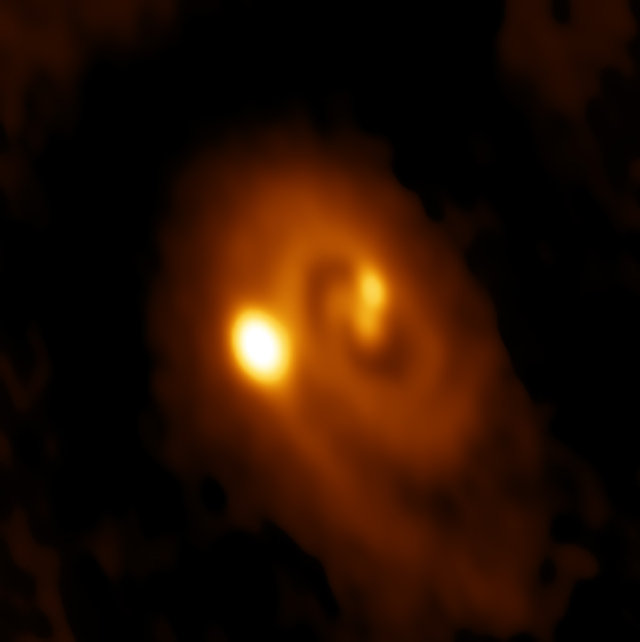
An article published in the journal “Nature” describes the discovery of a triple system in formation. An international team of scientists used the Atacama Large Millimeter / submillimeter Array (ALMA) and Karl G. Jansky Very Large Array (VLA) radio telescopes to observe the system called L1448 IRS3B, where a disk of dust and gas is fragmenting into a multiple star system.
Sophisticated radio telescopes such as ALMA, inaugurated in March 2013, and VLA are getting us used to seeing newborn stars surrounded by protoplanetary disks but this time the result is even more remarkable because in the L1448 IRS3B system three stars just being born on the same disk were identified. This system about 750 light years away from Earth shows for the first time one of the formation mechanisms so far only theoretical of multiple systems.
In the past there were research that showed the existence of two configurations for multiple systems: one in which the stars are distant from each other less than 500 times the distance between Earth and the Sun and one in which they are much more distant, more than 1,000 times the distance between Earth and the Sun. This difference suggested the existence of two different mechanisms of formation of multiple systems.
Subsequent observations brought evidence that the systems in which the stars are distant form when the molecular cloud in which they are born is fragmented as a result of turbulence. Evidence were missing concerning the second formation mechanism, of systems in which the stars are close. According to the hypothesis, a disk of material surrounding a young protostar fragmented ending up creating more than one star.
The study of the L1448 IRS3B system allowed to verify this mechanism as well. A central star is separated from the other two by 61 and 183 times the distance between Earth and Sun. The disk of materials that surrounds the three stars has a spiral structure that indicates instability inside it. The system might be younger than 150,000 years and the most distant star could be between 10,000 and 20,000 years old.
Over the last years the L1448 IRS3B system had been studied with other radio telescopes but they couldn’t detect the details like ALMA. Only with this instrument it was possible to obtain the observations needed to distinguish the stars and the spiral arms in the disk. There may be many more systems like this one but only recently it was possible to discover them, a big step forward for this type of research.


Permalink